The healthcare environment has been undergoing a lot of changes in recent years. One of the most significant has been the shift from hierarchical models of management to more collaborative approaches, such as shared governance. This blog post will explore what shared governance is, how it works, and the benefits it can bring to both nurses and patients.
The Shared Governance Model in Healthcare
The healthcare environment is continuously being challenged by an ever-changing landscape. This has brought with it new and unique challenges that healthcare has not had to face in the past. One of healthcare’s most pressing issues is the need for shared governance as a partnership model to achieve quality care, as well as the overall efficiency of the healthcare environment.
Shared governance is a component of the professional practice model where all staff voice is heard in decision-making structures and processes. have an equal say in how the sector is run.
With shared governance, healthcare makes decisions that are in the best interest of the patient, staff and organization. This allows for a greater focus on the quality of care and ownership of outcomes, as well as improved communication between all parties involved.
Clinical Nurses and Staff
Registered nurses and interprofessional colleagues play a vital role in healthcare and are uniquely positioned to participate in shared governance. As frontline workers, clinical nurses and interprofessional colleagues have a unique perspective on the needs of the patients they care for. They also have a deep understanding of the inner workings of the healthcare system. This combination of knowledge and experience gives clinical nurses and interprofessional colleagues a powerful voice when it comes to advocating for change.
Plus, as the largest group of patient care staff, have the ability to make a significant impact on the overall quality of care. When nurses are involved in shared governance, they ensure that decisions are made with the best interests of patients in mind.
Shared governance involves operationalizing organization-level councils a unit based council to study evidence-based practice to refine care decisions, establish guidelines, and monitor outcomes. Unit-based shared governance will help ensure improved healthcare outcomes for all patients. Developing shared governance structures and processes built on best practices will lead to enhanced professional practice, as well as improved outcomes in patient experience, clinical outcomes, and staff satisfaction/nurse engagement.
Nurse Leaders
Nurse leaders in the healthcare environment also have a vital role to play in shared governance. Since they are responsible for the overall operation of their division, department, or unit they have a vested interest in ensuring that it is run effectively and efficiently.
The leader’s role in shared governance is that of a partner. They are responsible for articulating the expectations as well as guidelines or parameters for decision-making. Nurse leaders are also responsible for removing any barriers that prevent staff involvement in decision-making. Not all decisions can, or should, be made by staff as nurse leaders retain responsibility for making decisions related to urgent matters, human resource issues and regulatory concerns.
Potential Barriers To Shared Governance Models
Despite shared governance models being a potential solution to many of the problems facing the healthcare environment, shared governance is not without its challenges. Let’s discuss the potential barriers to shared governance below:
Limited Resources
One of the biggest challenges facing the healthcare environment is a lack of resources. This can make it difficult to implement shared governance, as there may not be enough resources to go around. As a result, it is important to ensure that the resources that are available are used in the most effective way possible.
Lack of Buy-in
Another challenge facing shared governance is a lack of buy-in from all nurse leaders and/or staff. In order for shared governance to be successful, it is important that nurse leaders and staff are on board with the concept. If there is a lack of buy-in from one or more groups, it can make it difficult to implement shared governance.
Lack of Awareness
Another challenge facing healthcare is a lack of awareness about what shared governance is and is not. This can make it difficult to get buy-ins from all of the stakeholders involved. As a result, it is important to raise awareness about shared governance and its benefits.
Lack of Specific Structural Elements
Lastly, another challenge facing the implementation of shared governance is a lack of specific structural elements. This can make it difficult to implement shared governance, as there may not be a clear process to follow. As a result, it is important to develop specific structural elements before attempting the implementation of shared governance.
Despite the challenges shared governance faces, it remains a potential solution to many of healthcare’s problems, including today’s pressing issue of employee retention. Shared governance has the potential to improve care, increase efficiency, and create leader and staff accountability for their actions. As a result, it is important that nurse leaders and staff are aware of shared governance and its potential benefits so that it can be implemented without hesitation.
Benefits of Shared Governance in Healthcare
The shared governance culture shift in healthcare has been a long time coming. It taps into everything from patient care to staff retention and nurse engagement. Shared governance can lead to better patient outcomes, improved morale among healthcare providers, and increased job satisfaction.
Let’s explore these benefits in more detail below:
Quality Patient Outcomes
The main goal of healthcare is to provide quality care to patients. Shared governance gives frontline staff the responsibility, authority and accountability to make, revise, and influence decisions that affect patient care. This includes everything from the type of care that is provided to how supply resources are acquired. When staff have a say in these decisions, they can ensure that the needs of their patients are being met.
Improved Morale Among Staff
Nurses and interprofessional colleagues such as Respiratory and Physical Therapists are on the front lines of care. They see firsthand the challenges that patients face and the impact that decisions have on care. Shared governance gives them a say in these decisions, which in turn can improve their morale and job satisfaction.
Shared governance can also help motivate staff and promote a sense of shared purpose. After all, an inclusive and empowering work environment is one that attracts and retains the best employees. When staff members feel like they have a stake in the overall success of their team at work, they are more likely to be engaged and committed to their jobs.
Increased Job Satisfaction and Engagement
Shared governance also leads to increased job satisfaction and engagement among staff. They feel more valued and appreciated when they have a say in how their workplace is run. This, in turn, leads to them feeling more invested in their job and less likely to experience burnout.
A major problem faced by healthcare organizations these days is the continuous decline of the nursing workforce. Shared governance can be one way to combat this by making the profession more attractive to potential nurses.
The same applies to the retention of existing nurses and interprofessional colleagues. Shared governance has been shown to lead to increased job satisfaction and nurse engagement, which reduces turnover rates.
Shared governance is a win-win for both staff and healthcare organizations. After all, it guarantees that healthcare organizations will be run more effectively and that all staff are included in making decisions for and about their patients. With shared governance, staff members will feel more involved, thus enhancing their accountability for improving patient outcomes.
Improved Collaboration
All staff within healthcare organizations need to be able to collaborate effectively. Shared governance can help to promote collaboration by giving staff opportunities to express their thoughts and opinions about work-related matters as well as make decisions related to select work-related matters.
When staff feel like they are part of the decision-making process, they are more likely to be open to new ideas and willing to work with their interprofessional colleagues. This increased level of collaboration can lead to positive patient outcomes. After all, more minds work together to come up with solutions to existing problems.
For example, if nurses are given a unit-level voice, they are more likely to identify problems and create solutions that can improve the quality of care. Shared governance can also help create a sense of ownership among staff, which means that their dedication to their jobs and the goals of their jobs will be enhanced significantly.
Improved Communication
The whole healthcare environment would fail if proper communication channels weren’t established and maintained. Shared governance in healthcare helps to improve communication between different members of the interprofessional team. This, in turn, leads to a better understanding of each other’s roles and responsibilities and an eagerness to collaborate to solve issues. Shared governance also helps ensure that everyone is on the same page regarding care.
For example, a nurse may be assigned caregiver for the total knee replacement patient, yet the physical therapist is the professional responsible for ambulation of that patient. If there’s poor communication between these two members of the healthcare team, there could be a serious problem. Shared governance helps to improve communication and prevent such problems from happening.
Shared governance can help reduce these patient errors or mishaps by ensuring everyone is on the same page. Plus, shared governance promotes nursing empowerment through clear and consistent communication because as shared decision-making processes are implemented by nursing administrators.
What Is Shared Governance in Nursing?
Now that we have a general understanding of the concept of shared governance, let’s explore how it applies to nursing. Shared governance in nursing is a model that encourages clinical nurses to be actively involved in decisions that affect their practice. This includes everything from patient care protocols to supply acquisition.
When clinical nurses are empowered to assume a proactive approach to decision-making, they can implement smooth processes. This will make things easier for them and all other healthcare staff they interact with. Shared governance also helps to ensure that patient care is of the highest quality at all times.
Although the goals of shared governance in nursing are similar to those of shared governance in other industries, the model is unique to nursing. This is because nursing has always been based on a team approach. In fact, the term “nursing” comes from the Latin word “nutrire,” which means a person who cares for the infirm. Shared governance in nursing simply takes this team or collaborative approach one step further by giving clinical nurses a formal role in decision-making.
Below are the main goals of nursing shared governance:
To Ensure That Patient Care Is of the Highest Quality
As mentioned above, shared governance in nursing is a system that empowers clinical nurses to have a say in the decision-making process. This makes it possible for clinical nurses to directly impact the quality of care. Shared governance also empowers clinical nurses to work together to improve working conditions and patient outcomes.
For example, if a group of clinical nurses feels that the current unit specific supply levels are not adequate to meet the needs of patients, they would work together to develop a plan to improve the situation.
To Ensure Nurses Have a Formal Role in Decision-making
Prior to the implementation of shared governance, clinical nurses were not typically involved in the decision-making process. Shared governance gives clinical nurses a formal role in decision-making and empowers them to have a voice in patient and nurse outcomes. In a way, nurses become representatives of themselves and the people they care for.
This system also provides opportunities for clinical nurses to develop leadership skills, take on more responsibility within their organization, and fosters succession planning. This way, clinical nurses can play an active role in shaping the future of healthcare.
For instance, a clinical nurse who is interested in improving the quality of care may participate on a committee that makes decisions about changes to the nursing care delivery system. This ensures that the clinical nurse’s perspective will be considered when decisions are made about the care of patients.
To Improve Nurse Retention and Job Satisfaction
These days, a lot of nurses are looking for ways to improve their working conditions and career satisfaction. Shared governance is a model of nursing that allows clinical nurses to have a say in the decisions that affect their work. This can include things like supply levels, care delivery, and policy changes. Shared governance has been shown to improve nurse retention and job satisfaction, both of which are important factors in keeping the nursing profession strong.
Prior to the implementation of shared governance, clinical nurses were generally not involved in the decision-making process at their facility. This led to a feeling of powerlessness and dissatisfaction among many clinical nurses. The shared governance model of nursing was developed in response to these problems and to ensure that nursing, like all other professions, operationalized a governance structure for the nursing professions within their organization.
To Create a Work Environment That Is Satisfying for Nurses
Working as a nurse has always been demanding. The hours are long, the work is physically and emotionally taxing, and there is little time for breaks. It’s no wonder that nurses have one of the highest rates of job dissatisfaction and burnout.
One way to create a work environment that is more satisfying for nurses is through shared governance. Shared governance helps clinical nurses evaluate their work environment and make changes that will improve care and the patient outcomes of that care. It also gives nurses a greater sense of control over their work environment and their careers.
For example, if clinical nurses are unhappy with the way shift changes are handled, they can work together to create a new system that is more efficient and less stressful. Or if they feel that their input is not valued by management, they can work together to create a process for giving feedback and enhancing communication with management.
Shared governance is not a quick fix for all of nursing’s problems, but it is a way for clinical nurses to participate in the control of their work environment and create positive change. This guarantees that the needs of patients are always the top priority and that clinical nurses will always be able to work to the best of their abilities without encountering needless obstacles.
Empowering Nurses – Tips for Implementing Shared Governance
The implementation of shared governance in nursing can be daunting, but it is important to remember that shared governance is not about changing how things are done; it is about improving the way things are done. The following steps will help you to implement shared governance in your facility:
Get Buy-in From Nursing Leadership
It is important to get buy-in from the nursing leadership before attempting to implement shared governance. Shared governance can be a radical change for some facilities, and it is important to have the support of those in leadership. Once you have their support, you can move on to the next step.
Involving Staff
The next step is to involve staff in the shared governance process. This can be done by holding meetings and inviting staff to participate in committees. It is important to get as many people involved as possible so that the shared governance model can be successful. Levels of involvement can vary from leading a council to offering feedback to council members.
Creating Councils
The next step is to create councils. These councils would be responsible for different aspects of Shared Governance in nursing. Some examples of committees include, but are not limited to:
- Education Council
- Quality Improvement Council
- Patient Safety Council
- Shared Decision Making Council
Each council would have a specific purpose, and each member would be aware of the expectations. It is important to remember that these councils are not about creating more work, they are about improving the way things are done.
Evaluating Progress
The final step is to evaluate the progress of Shared Governance. This can be done by routinely measuring the outcomes of the work a council has done and by conducting surveys. It is important to get feedback from staff so that you can make changes as needed. Shared governance is an ongoing process, and it is important to keep evaluating progress made so that improvements can be made.
The main goal of shared governance in nursing is to transform an exclusive decision-making process into one that is more inclusive. Shared governance is about giving clinical nurses a voice in the decision-making process. When done correctly, shared governance will improve patient care and staff satisfaction.
Shared Governance Nursing Model
A nursing shared governance structure is a system that ensures that nurses play an active role in transforming their work and the environment that they work in. This type of governance gives clinical nurses more control over their practice and allows them to be more involved in shaping the direction of their work. The shared governance model is based on the premise that clinical nurses are best positioned to make decisions about their work when they are given the opportunity to do so. After all, they are the ones who are on the front lines of patient care.
Professional autonomy is the main characteristic of the shared governance model. This means that clinical nurses make decisions about their work without getting approval from a supervisor or manager. Clinical nurses, with guidance from leadership, are also able to develop policies and procedures, which leads to professional growth. This type of autonomy is empowering for nurses, as it allows them to take charge of their work. With autonomy and good leadership skills, the nursing culture will be able to sustain shared governance.
Leaders in the world of shared governance, admitted that shared governance can be elusive. This is because different organizations have different ways of implementing shared governance. The main thing to remember is that, at its core, shared governance is about giving clinical nurses a voice in the decisions that affect their work.
Below is the structure by which shared governance could be achieved:
Partnership
Partnership pertains to the relationship between the clinical nurses and nursing leadership. This is important because it allows for two-way communication and ensures that everyone is on the same page. Through healthy partnerships, clinical nurses will be free to share their ideas and concerns while also trusting that nurse leaders have their best interests at heart. Shared governance is only possible when there is a strong foundation of partnership.
Equity
Equity pertains to contributing to and having a voice in decisions that affect one’s work life. Shared governance models promote equity by ensuring that clinical nurses have a seat at the table when it comes to decision-making about their practice. This not only leads to better working conditions but also to improved patient care.
Through shared governance, clinical nurses can express their concerns and create change that leads to a more positive work environment and, ultimately, better patient care. Shared governance unlocks nurses’ authority to voice concerns and to have an impact on their practice. It is a way to ensure that clinical nurses are able to work to the best of their abilities without being hindered by factors beyond their control.
Accountability
Accountability pertains to the actions and decisions made by the individual nurse. Shared governance fosters a sense of ownership for clinical nurses and encourages them to be accountable for their own practice. The same applies to all the other members of the healthcare team.
Shared governance also promotes transparency and communication among all members of the healthcare team. This way, everyone is aware of the actions and decisions made by each member. This promotes a sense of trust and cooperation among all members of the team.
Ownership
Lastly, shared governance in nursing offers clinical nurses a sense of ownership over their work. When clinical nurses understand that the way they do their jobs affects their team’s overall success, they’re more likely to feel invested in their positions. This leads to better performance and enhanced job satisfaction. Shared governance can be an effective tool for retaining nurses and ensuring that they’re providing high-quality care.
Shared Governance vs Participatory Management
Participatory management pertains to the involvement of employees in offering feedback on issues that affect their work. Shared governance, on the other hand, is a more specific term that pertains to the involvement of clinical nurses in decisions that affect their practice.
While participatory management can be beneficial, it doesn’t always lead to a feeling of clinical nurse decision making since leaders make the final decision. Shared governance, on the other hand, ensures that clinical nurses are empowered to make decisions that affect their practice. This leads to better outcomes for both clinical nurses and patients.
Some of the things that make shared governance so successful are:
- Clinical nurses are given a voice in decisions that affect their practice.
- Shared governance leads to improved communication between clinical nurses and other members of the healthcare team.
- Shared governance promotes teamwork and collaboration among nurses.
- Clinical nurses who are involved in shared governance have a greater sense of ownership over their work.
On the other hand, there are some challenges that come with shared governance. These include:
- Shared governance can be time-consuming.
- Shared governance requires clinical nurses to be knowledgeable about the issues that affect their practice.
- Shared governance can be difficult to implement in large organizations.
- Leaders may be resistant to shared governance practices.
Before shared governance was introduced, many clinical nurses felt like they had no control over their work. Shared governance has given clinical nurses a voice in decisions that affect their practice. This has led to improved communication and teamwork among nurses. While there are some challenges associated with shared governance, the benefits far outweigh the challenges. Shared governance is a successful way to involve clinical nurses in decisions that affect their practice.
Shared Governance During the COVID-19 Pandemic
The COVID-19 pandemic has presented many challenges to the nursing profession. One of the most significant challenges has been the need to re-evaluate and adapt shared governance structures in order to ensure the safety of both nurses and patients.
During the pandemic’s peak, the need for shared governance structures to be more flexible and respond quickly to healthcare environment changes was highlighted significantly. This was because traditional shared governance models were not designed to handle such rapidly changing conditions.
For example, some hospitals had to temporarily suspend shared governance committees in order to focus on more immediate issues related to the pandemic. Others adapted their council so that they could meet virtually, which allowed them to continue functioning while also ensuring the safety of nurses.
The pandemic has also highlighted the importance of shared decision-making among clinical nurses. In many cases, nurses were the front-line workers who had to make quick decisions about patient care. Shared decision-making among nurses helped ensure that the best possible decisions were made during the time when patients needed care the most.
The pandemic has shown that shared governance structures can be helpful in times of crisis. As the world moves into the recovery phase of the pandemic, it is important that healthcare organizations continue to adapt and improve their shared governance structures so that they are better prepared to handle future challenges.
One way to do this is by ensuring that shared governance is embedded into the organizational culture. This can be done by providing education and support for both the leaders and clinical nurses involved in shared governance. Additionally, hospitals can create incentives for nurses to participate in shared governance activities through programs such as professional advancement.
The pandemic has shown that shared governance is a vital part of the nursing profession. By embedding shared governance into the organizational culture, hospitals can create a more responsive and effective healthcare system that is better prepared to handle future challenges.
Conclusion
The implementation of a shared governance structure in nursing has positively impacted patient and nurse outcomes, patient and organizational outcomes, nurses’ job satisfaction, and commitment to their organization. Shared governance can also improve patient care by fostering communication and collaboration among nursing leadership and clinical nurses. Although the benefits of shared governance are clear, the challenges of implementing this model should not be underestimated.
Resources:
Guanci, Gen. Shared governance that works. Springer Publishing Company, 2018.
Guanci, Gen. Feel the pull: Creating a culture of nursing excellence. Springer Publishing Company, 2015.
Guanci, Gen MEd, RN-BC; Medeiros, Marky MSN, RN. Shared governance strategic planning retreat: A best practice. Nursing Management (Springhouse): August 2018 – Volume 49 – Issue 8 – p 36-40 doi: 10.1097/01.NUMA.0000542296.59754.61
Roberts-Turner, Renee DHA, MSN, RN, NE-BC, CPHQ; Coleman, Lael BA; Guanci, Gen MEd, RN-BC, CCRN; Humbel, Tina Kunze MSN/MHA, RN-BC, CCRN, CPN; Walczak, Dory MA, MSHI, RN, CCRN, NE-BC, CPHQ. Creating and sustaining a clinical environment of nursing excellence. Nursing Management (Springhouse): July 2014 – Volume 45 – Issue 7 – p 48-52 doi: 10.1097/01.NUMA.0000451036.92210.51
Medeiros, Marky MSN, RN. Cultivate a culture of excellence at the point of care. Nursing Management (Springhouse): May 2020 – Volume 51 – Issue 5 – p 7-9 doi: 10.1097/01.NUMA.0000657284.75177.5f
Medeiros, Marky MSN, RN. Improving outcomes, sharing innovations, celebrating excellence. Nursing Management (Springhouse): January 2019 – Volume 50 – Issue 1 – p 10-11 doi: 10.1097/01.NUMA.0000550446.71633.28
Guanci, Gen MEd, RN-BC. How relationship-based care supports the Magnet® journey. Nursing Management (Springhouse): January 2016 – Volume 47 – Issue 1 – p 9-12 doi: 10.1097/01.NUMA.0000475635.75258.5e
Medeiros, Marky MSN, RN. Shared governance councils: 10 essential actions for nurse leaders. Nursing Management (Springhouse): July 2018 – Volume 49 – Issue 7 – p 12-13 doi: 10.1097/01.NUMA.0000538920.83653.9b
Succession Planning for Shared Governance Council Members
Shared Governance Covid Recovery Strategy
Gen is driven by the desire to help clients create organizational excellence through measurable improvement. She thrives on helping others reach meaningful goals, including Magnet® designation.





